
|
Broad Ripple Random Ripplings

The news from Broad Ripple
Brought to you by The Broad Ripple Gazette
(Delivering the news since 2004, every two weeks)

|
| Brought to you by: |

|

|

|

|

|

|
Converted from paper version of the Broad Ripple Gazette (v12n20)
Everything you always wanted to know about the canal...Part Three
posted: Oct. 02, 2015
From www.in.gov/dnr: Eurasian watermilfoil is native to Europe, Asia, and northern Africa. As of 2003, 45 states reported the presence of Eurasian watermilfoil. In Indiana, of the approximately 616 lakes and reservoirs in the northern one-third of the state, Eurasian watermilfoil infested at least 175 of them as of the late 1990's. Throughout the state, approximately 126,000 acres of lakes and impoundments contain some level of Eurasian watermilfoil.
Eurasian watermilfoil was first introduced into the United States through the aquarium trade. The first documented identification of Eurasian watermilfoil in open water in the United States was in 1942 from a pond in Washington D.C. By 1950 the species was into the Midwest in Ohio and was also found in western states such as Arizona and California. Eurasian watermilfoil is now found throughout the continental United States with the exception of the northern Great Plains region and Maine.
Eurasian watermilfoil was first introduced into the United States through the aquarium trade. The first documented identification of Eurasian watermilfoil in open water in the United States was in 1942 from a pond in Washington D.C. By 1950 the species was into the Midwest in Ohio and was also found in western states such as Arizona and California. Eurasian watermilfoil is now found throughout the continental United States with the exception of the northern Great Plains region and Maine.
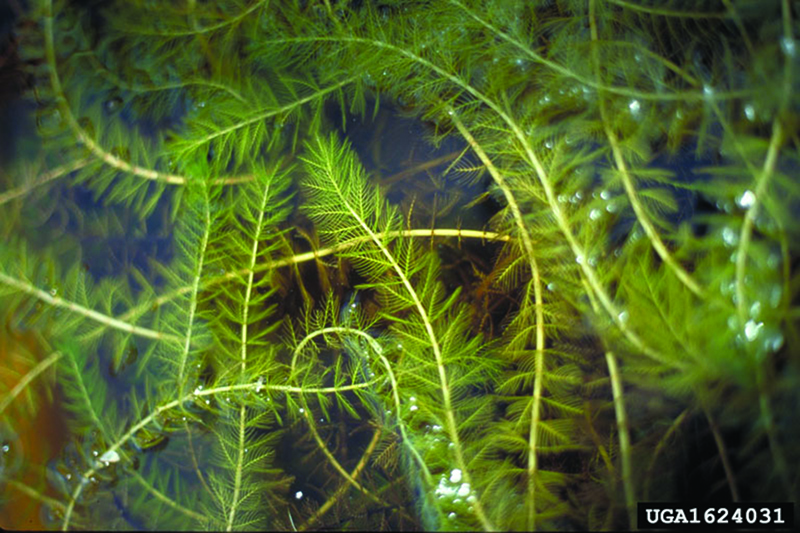
image courtesy of USFWS
In the warm months the flow of the canal can be impeded by the growth of pond weed.
"For decades we had curly leaf pondweed and it normally grew in May and June and when the water temperatures would get warm, in July and August, it would start to die off," explained Ed Malone, Director of Water Production for Citizens.
"After the Guide spill (in Anderson), which occurred in 99, the river changed dramatically [remember, the river feeds the canal -Alan] and we started to see the proliferation of what they call Eurasian Milfoil. It's an invasive species that can grow up to 6 inches a day, grows very quickly. It started to take root in the canal. It's in the river as well, but it also took root in the canal. It seemed at times, no matter how much we cut, it was constant... it took all of our efforts to get ahead of it. In fact, in 2012, we had up to five boats at a time working in the canal."
"Sixteen hour shifts, seven days a week," added Edwin Morris, Operations and Maintenance Supervisor for Citizens.
"We keep track of how much material we harvest each year, we have to report that. We have to get a permit every year to harvest weeds in the canal through the Department of Natural Resources (DNR). It's an annual permit. We apply for it each spring," explained Ed.
I asked why Citizens needs a permit to harvest pond weed from the canal that it owns. Ed explained that Citizens owns the canal, but the water in the canal is "Waters of the state". According to Indiana code (IC 14-8-2-307) " 'Water of the state,' means a lake, reservoir, marsh, waterway, or other water: under public ownership, jurisdiction, or lease; or that has been used by the public with the acquiescence of any or all riparian owners."
Getting back to the flow. . . one of the big benefits of our canal system is that its elevation continuously drops from the headgates all the way down to the White River treatment facility. The initial force of the water from the river combined with the gravitational pull downhill gives the water enough force to make it all the way through the treatment facility.
"Exactly," said Ed.
"It's all downhill to here," I added.
Ed continued, "This is one of the few plants, water treatment plants, you'll find where we do not lift the water at all through our treatment plant operation. We provide no energy to the treatment plant, to the water flow, through this entire water treatment plant operation."
"Water flows entirely by gravity through the sedimentation basin. We bring the water in off the canal right here [Ed points to the aerial photo of the plant showing the canal inlet at the north end of the property], flows by gravity into the treatment plant and we come through our sedimentation basins. So it flows by gravity through those sedimentation basins, then comes into this building where we're at today, and then this building has two filtration tanks. Flows by gravity through those filtration buildings, then continues to flow by gravity out into the UV operation. Continues to flow by gravity through the chlorine contact basin, and then into our reservoir which is here. It also continues to flow by gravity through a bypass that goes through here and over to our Riverside Station, which sits at 1201 Waterway Boulevard. That is the pump station that pumps water into the downtown district, the central district. Another pump station which is on this facility right here, pumps water into the north and northeast districts. Meaning, the water from here is going north and east out of this facility. But, it can go downtown if it needs to. The Riverside station pumps primarily downtown and then goes on via our Madison Station down to Southport."
" And, does this come back up to the Broad Ripple area for pumping? For fresh water," I asked.
Ed responded, "There is another pump station in Broad Ripple. You probably don't even know it's there. Its address is on College, but it is not on College...not on what is present-day College. It is on the alley that is directly to the east of it. It's at 64th Street, It's basically a Morton Steel building. And there is a pump station in that building there.
The pump station in Broad Ripple, behind Rich Oil [D3 on map]. (car is parked in front)
![The pump station in Broad Ripple, behind Rich Oil [D3 on map]. (car is parked in front)](20150918_122947.jpg)
This fact really surprised me. I have lived in Broad Ripple for 55 years and have driven down that alley for years and have never even seen this building. Amazingly, this pump for the entire area seems to not make any noise outside of the structure.
I followed up, "So, this little pump station, it's just giving extra pressure? [The treatment plant] pumps it to there and the one on 64th just gives it more...?"
Ed answered, "[The 64th Street pump] pumps it up into what we call our Meridian Hills district. Our system has twenty pressure districts, and typically at the boundaries of those districts are a pump station or a primary treatment plant. So, we move water multiple ways. But, there are two pump stations that take water from this station that are move it into the Broad Ripple area. One that we just talked about is the College Station. The other one is ...!
End of Part Three
At the processing plant downtown - The building on the left is the modern inlet. The right is the historic one
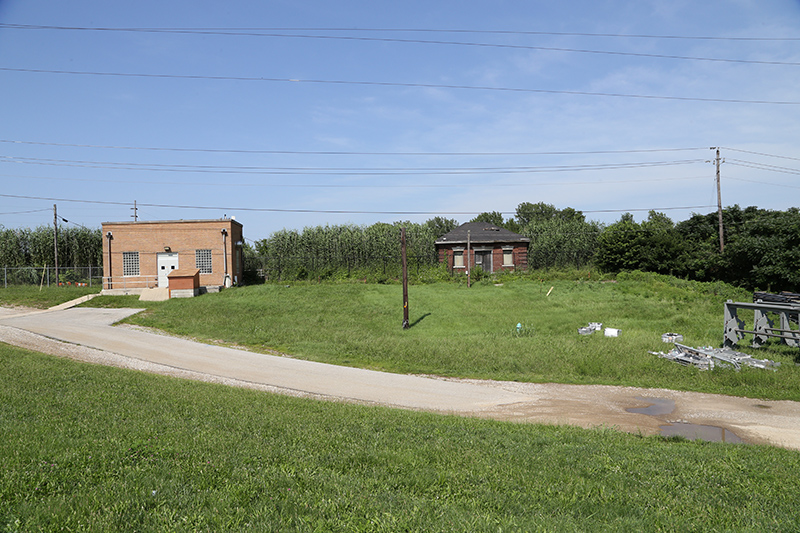
Canal inlet to White River Treatment
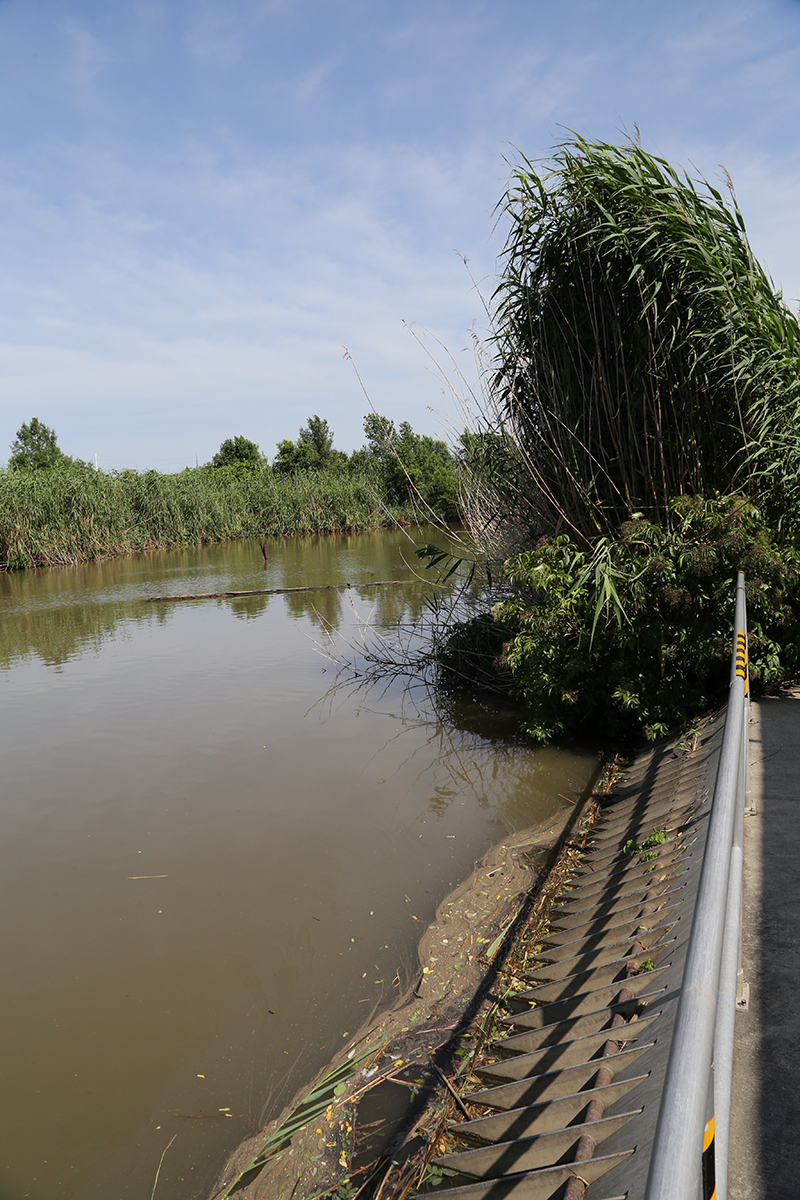
Citizen's Edwin Morris shows Mario Morone the grate across the canal inlet to the treatment plant at 16th Street.
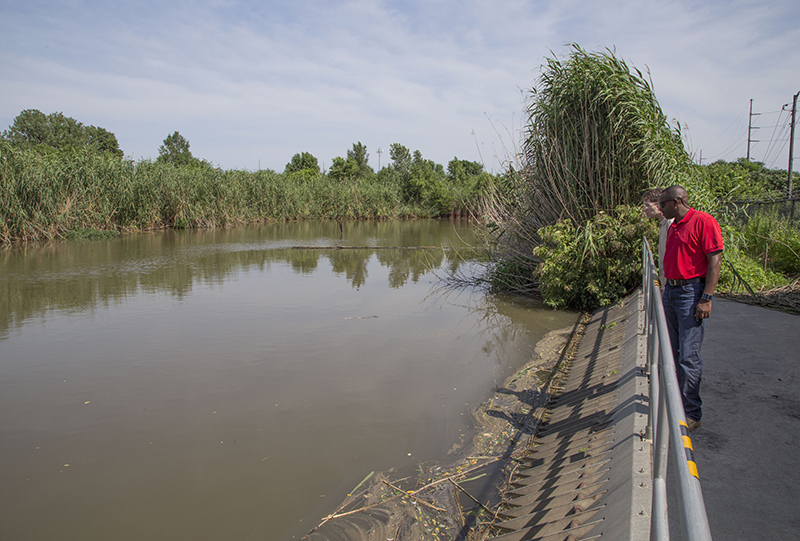
First processing after inlet to plant
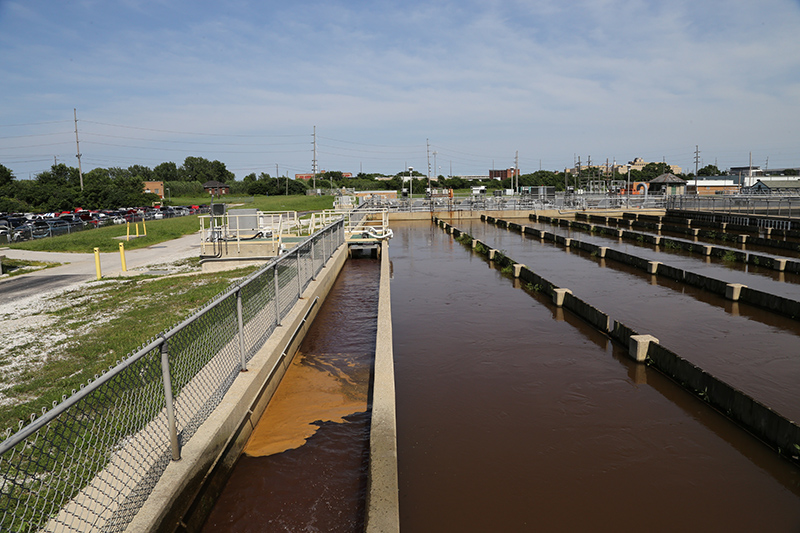
alan@broadripplegazette.com

|

|

|
| Brought to you by: |

|

|

|
| Brought to you by: |

|

|

|


